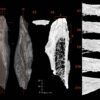What would you guess are the two biggest killers in the world? Based on media coverage, maybe you guessed gun violence, accidents or COVID-19. But the top two killers are actually cardiovascular disease and cancer. These two diseases combined account for nearly 50% of deaths in the U.S.
Cardiovascular disease and cancer seem to be quite different on the surface. But newly discovered parallels between the origins and development of these two diseases mean that some treatments may be effective against both.
I am a biomedical engineer who has spent two decades studying and developing ways to improve how drugs travel through the body. It turns out that tiny, engineered nanoparticles that can target specific immune cells may be a way to treat both cancer and cardiovascular disease.
Cardiovascular disease and cancer
Atherosclerosis is the most deadly form of cardiovascular disease. It results from inflammation and the buildup of fat, cholesterol and other lipids in the blood vessel wall, forming a plaque. Most heart attacks are caused by plaque rupture. The body’s attempt to heal the wound can form a blood clot that blocks blood vessels and result in a heart attack.
On the other hand, cancer usually arises from genetic mutations that make cells divide uncontrollably. Unrestrainable, rapid cell growth that is untreated can be destructive because it is difficult to stop without harming healthy organs. Cancer can start from and occur in any organ of the body.
Although cardiovascular disease and cancer appear to have different origins and causes, they share many risk factors. For example, obesity, smoking, chronic stress and certain lifestyle choices like poor diet are linked to both diseases. Why might these two diseases share similar risk factors?
Many of the similarities between cardiovascular disease and cancer can be traced to inflammation. Chronic inflammation is a primary cause of atherosclerosis by damaging the cells lining the blood vessels and progressively worsening plaques. Likewise, chronic inflammation can initiate cancer by increasing mutations and support cancer cell survival and spread by increasing the growth of the blood vessels that feed them nutrients and suppressing the body’s immune response.
Cardiovascular disease and cancer share many risk factors.
Treating two conditions at once
Research hints that therapies designed for cancer can also help treat atherosclerosis.
One example is drugs that target immune cells called macrophages in tumors and cause them to eat cancer cells. It turns out a similar drug can cause macrophages to clear dead and dying cells in atherosclerosis, which shrinks plaques.
Another example are antiglycolytic therapies that prevent the breakdown of glucose. Glucose, or sugar, is the body’s main source of energy. These drugs can make diseased tumor blood vessels and atherosclerotic blood vessels look more…



